Found only in shallow water as they are dependent on light, seagrasses are the only flowering plants (angiosperms) able to live in seawater and pollinate underwater. Crabs and shrimp are the submarine equivalent of bees and insects in pollinating the flowers.
Seagrass is not a true grass but is more closely related to lilies and orchids. It gets its name because most types have long, thin leaves that resemble grass, especially when they grow en masse in meadows.
There are 72 species of seagrass in the world. Two species are found in the UK, Eelgrass (Zostera marina) and Dwarf Eelgrass (Zostera noltei). Other common names are wigeon grass, broad leaved grass wrack, marlee, sedge and slitch. When these plants grow together they form submerged ‘meadows’ that are highly productive ecosystems, slowing down currents, trapping nutrients and providing support for other flora and fauna.
Zostera marina grows between 20-50cm high (exceptionally up to 2m), while the tallest seagrass species ever recorded, Zostera caulescens found growing in northern Japan, was 7m (35ft) long!
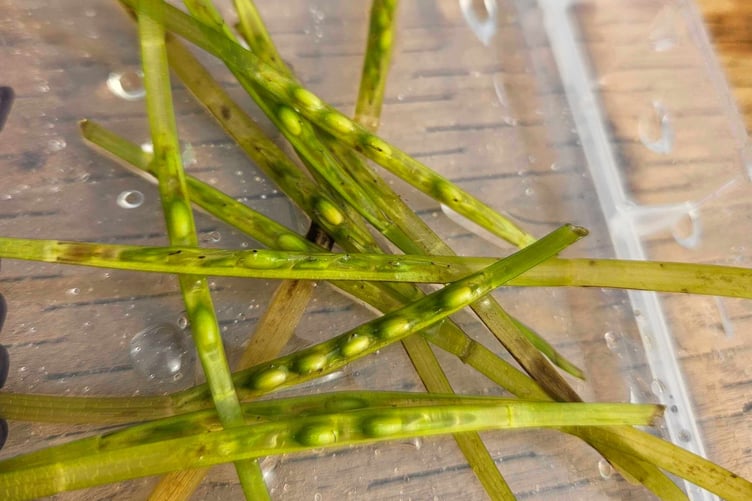
In Wales, Zostera beds are mostly found in sheltered bays and estuaries: at North Haven on the Pembrokeshire island of Skomer; also at Dale, where in 2020 two hectares were planted in the Milford Haven waterway, and notably in Gwynedd at Porthdinllaen on the Llŷn Peninsula. Porthdinllaen is the perfect place for seagrass to grow and houses a seagrass meadow thought to be the largest and densest in Wales, the size of 46 football pitches!
Seagrass losses are ‘catastrophic’.
A study in the journal Frontiers in Plant Science published in 2021 found that “at least 44% of United Kingdom’s seagrasses have been lost since 1936, 39% since the 1980s. However, losses over longer time spans may be as high as 92%.” Scientists describe the loss of our seagrass meadows as catastrophic.
After Britain’s seagrass succumbed to a wasting disease during the 1930s, increased human disturbance, coastal development and pollution has hampered its recovery.
The Marine Conservation Society says the the loss of seagrass habitat over time has been caused by industrial growth, the modification of ports, boat traffic, and increasing, stronger storm events.
The remaining meadows are damaged by the anchoring and mooring of vessels. It’s estimated that around 10% of the seagrass at Porthdinllaen has been lost due to moorings alone. Propellers, trawlers’ nets and dredging all have a part to play.
Nutrient pollution is one of the biggest threats to seagrass. This is when - either through sewage discharge or the use of synthetic fertilisers and fossil fuel burning - excessive nutrients cause algae growth. These algae blooms deplete oxygen in the water; they also shade the seagrass from the sunlight it needs to grow.
Project Seagrass recently published a water quality report ‘Seagrass vs Water Quality’ in collaboration with Blue Marine Foundation and Surfers Against Sewage.
Seagrass has huge benefits.
Seagrass can protect coasts from erosion, improve water filtration, support biodiversity and even fight climate change.
How? We all know how trees help us by ‘breathing in’ carbon dioxide and releasing oxygen through photosynthesis. Well, stems and leaves of seagrass use light to convert carbon dioxide into oxygen in the same way, but more effectively. Carbon dissolved in the ocean is known as ‘blue carbon’. Seagrass is able to trap and store vast amounts of carbon up to 35 times faster than forests. The oxygen is then available for other living organisms to use.
Despite taking up less than 0.2 per cent of the seafloor, seagrass accounts for over 10 per cent of global carbon storage. As the seagrass grows and renews, seagrass sediment collects on the sea floor, which can store carbon for thousands of years if left undisturbed.
Additionally, UK seagrass supports up to 40 times more marine life than bare seabeds. These include the two native species of seahorse: the spiny seahorse and the short snouted seahorse to octopus. It is also home to 50 species of fish, including cod, plaice and pollock. One fifth of the world’s biggest fisheries use seagrass meadows as nurseries. And at low tide, along the shore, huge flocks of wildfowl feed on the exposed seagrass.
Meanwhile, the ‘forest floor’ of a seagrass meadow provides a shelter and food source for molluscs, shrimp, crustaceans and anemones.
The roots of seagrass in mud or sand or fine gravel, help stabilise the seabed by binding sediment. Meanwhile the blades reduce the power of the waves by about 40 per cent, protecting coastal communities from storm surges and coastal erosion caused by rising sea levels.
Seagrass is vital to the health of the ocean, producing antibacterial and anti-fungal materials and absorbing nutrient pollution. In turn, it releases sugar along with plant chemicals called phenols. This combination attracts specific microorganisms that feed essential nutrients back into the sea.
Not all ‘seagrass’ is seagrass.
You may be wondering: if seagrass is so beneficial to the earth’s future, what about all the furniture, rope, baskets and mats made from seagrass? Is the harvesting sustainable? Are we unwittingly damaging the environment by choosing natural furnishings?
According to the experts at seagrasswatch.org, There is no reason to worry, as the use of the term ‘seagrass’ is “predominantly misleading” and is based on the overuse of common names.
“Some marketing sites go as far as ascribing true seagrasses as the source product in seagrass matting which further complicates the situation,” explains the website.
Generally, the plants used are Chinese and South Asian freshwater and brackish water reeds. A species of Cyperus reed is also used for weaving into products, and some seagrass furniture is actually water hyacinth, a freshwater weed.
“Unfortunately, we have no indication regarding whether the collection of these freshwater grasses/reeds or dune grasses is sustainable, but it is most unlikely they are using true seagrasses.”
Seagrass restoration started in Wales.
The first attempt to restore UK seagrass meadows on a large scale was in Dale, Pembrokeshire, where a pilot study aimed to expand seagrass restoration to a two-hectare area - that’s approximately the size of two rugby pitches.
Over a million seeds were planted across the site in an initiative that harnessed years of experimentation with growing methods.
A collaboration between Swansea University, Project Seagrass and Pembrokeshire Coastal Forum, funded by WWF and Sky Ocean Rescue, the pilot was completed in 2020. That’s not the end of the story though as it takes a minimum of five years to establish a seagrass meadow, and its progress was set back by a trawler incident followed by a storm in 2022.
Following the completion of the initial planting programme, Project Seagrass now undertakes regular monitoring at the site to assess changes to the seagrass plants as the meadow establishes as well as planting more seagrass seeds to help ‘top-up’ the existing seagrass.
The Dale Seagrass Stakeholder Group helps guide the management of Dale seagrass, share information and raise awareness, and educational sessions are run for people of all ages, including school and youth groups.
One of the fascinating elements of the Dale pilot study has been the mechanisation trials - an attempt to identify the best ways of restoring seagrass on a wider scale - and among the technology trialled is an underwater robot called Shack. The robot planter holds 20,000 seeds mixed with mud which it injects into the sediment in the seabed.
Laugharne houses the only seagrass nursery in Wales.
In 2021, Project Seagrass, Salix River and Wetland Services, and Swansea University collaborated to create the seagrass nursery at an area of land on a working ragworm farm between Laugharne and Pendine in West Carmarthenshire. The nursery has just passed the two-year anniversary of its first planting experiment.
“We’ve always seen potential in the site. There’s a lot of space (roughly 50 acres) for expansion as well as access to natural salt water which is pumped directly from the estuary,” said nursery lead Emily Yates.
“With Salix also working on the site there’s plenty of opportunity for collaboration and knowledge sharing,” she added.
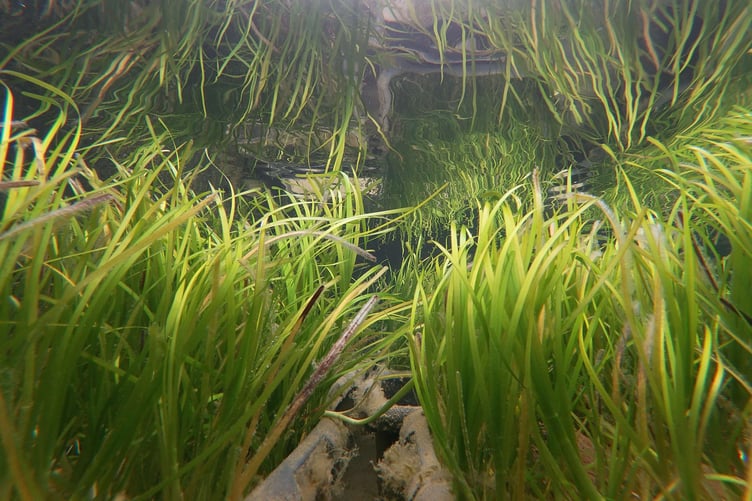
We asked Emily about what the work at the nursery involves on a daily basis:
“No two days are the same at the nursery. There’s always a lot of maintenance work to do such as cleaning, water changing, and making sure the aquarium systems are working.
“We run several growing trials so there is usually some form of data collection to be undertaken whether that be counting or measuring the plants.
“Much like with your back garden, there are seasonal jobs for us to do. In July and August our fieldwork teams collect seeds from wild donor meadows. These seeds are then processed in our HQ in Bridgend and clean seeds arrive at the nursery for long term storage in September and October. Our Nursery propagator Carly Green oversees seed care; monitoring their condition and tracking viability.
“In the autumn, we pot up plants and in the winter when their growth has slowed, we focus on pruning off the dead leaves and deep cleaning. Come spring, we plant out our new seed stock (from the collection in August) and monitor germination and feed our older plants. This is when we begin to see flowers. We’ll track their development through to summer when the seeds start to develop.
“Last year was the first time we had flowers and we managed to harvest our first batch of Nursery-grown seeds. This past March we planted them and have been watching them grow since.”
Founding members of the Global Seagrass Nursery Network, the laugharne team keeps in regular contact with other nurseries in the UK. They now have nearly 200 people on the mailing list from all over the world.
In the last three years, a lot has been learnt from both successes and failures.
The handbook is still being written.
Emily explained: “When we started, we were one of the first nurseries in the UK and we didn’t even know if it would be possible to grow seagrass in these conditions. We didn’t know the best storage for seeds (and probably still don’t), if the plants would follow natural populations or if the conditions we created would be so artificial that they wouldn’t flower.
“When you think about all of the information you find on the back of a seed packet in a garden centre, you know exactly when to plant them, what soil they like, whether to harden them and when they’ll flower. We just don’t know that for seagrass. We started out trying to find the best soil/substrate to grow them in and have taken it from there.”
Laugharne is now working on a handbook to help other nurseries. And Project Seagrass’s efforts have brought national media attention, with CEO Dr Leanne Cullen-Unsworth being included in the BBC list of the top 100 most influential women, an in-depth article on the nursery being published in the Guardian, and ITV filming on site recently.
“To be able to stand here today and present a fully working nursery with mature, flowering and seed producing plants is an incredible achievement,” said Emily.
“We hope that our nursery project will help to supercharge our stocks for bolstering wild populations. However, the nursery alone won’t solely redress the balance. Restoration and conservation must go hand in hand if either are to succeed. We need to continue to understand and address the stressors and pressures which are damaging our wild populations which are currently preventing them from naturally recovering. This means working with key stakeholders, local communities, and governments.
Although they’re not currently recruiting, they hope that the wider site in the future will provide jobs for the community, providing opportunities to earn a real living wage in the green sector. Any opportunities with Project Seagrass are advertised on their website.
“A lot of the work Project Seagrass does wouldn’t be possible without the support of our volunteers,” Emily added. “We’ve had people join for seed collections, seed planting, monitoring and even cleaning down fieldwork equipment.”
Project Seagrass has launched a citizen science app SeagrassSpotter so that members of the public can connect with meadows and let the project know how their meadows are doing. Anyone can use the app and upload photos when they see seagrass.
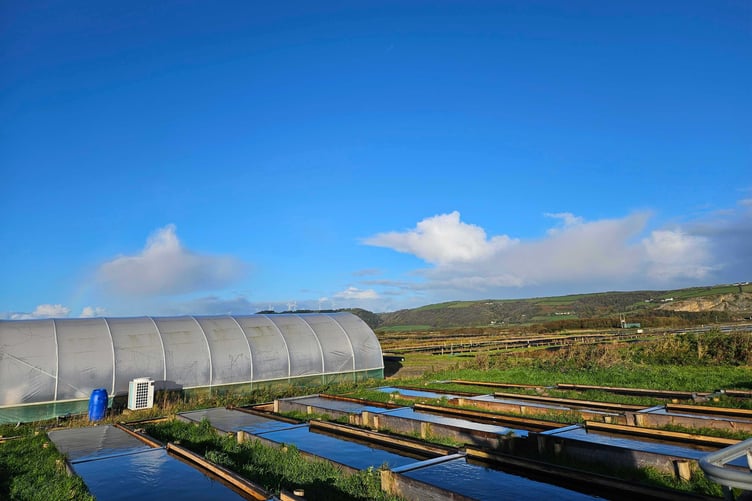
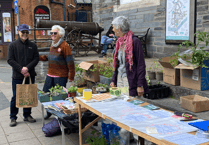
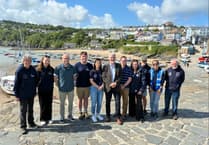
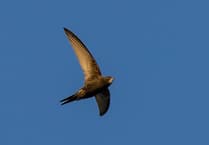
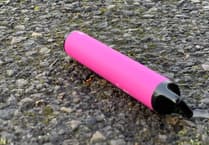
Comments
This article has no comments yet. Be the first to leave a comment.